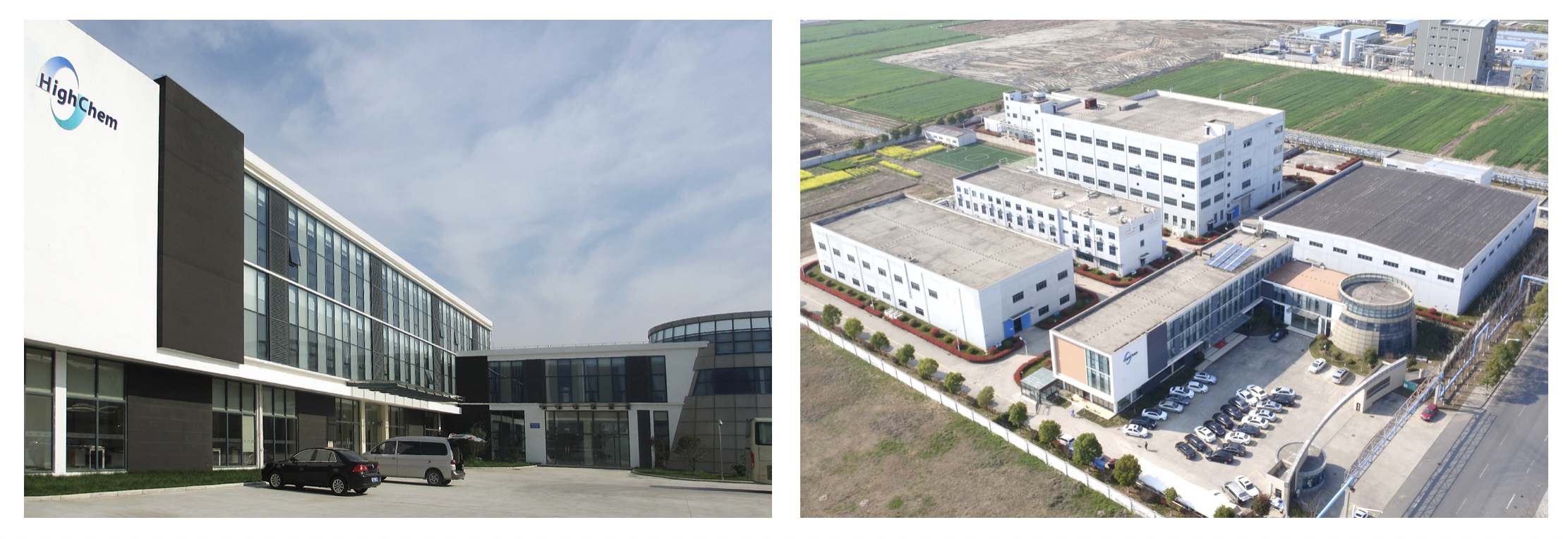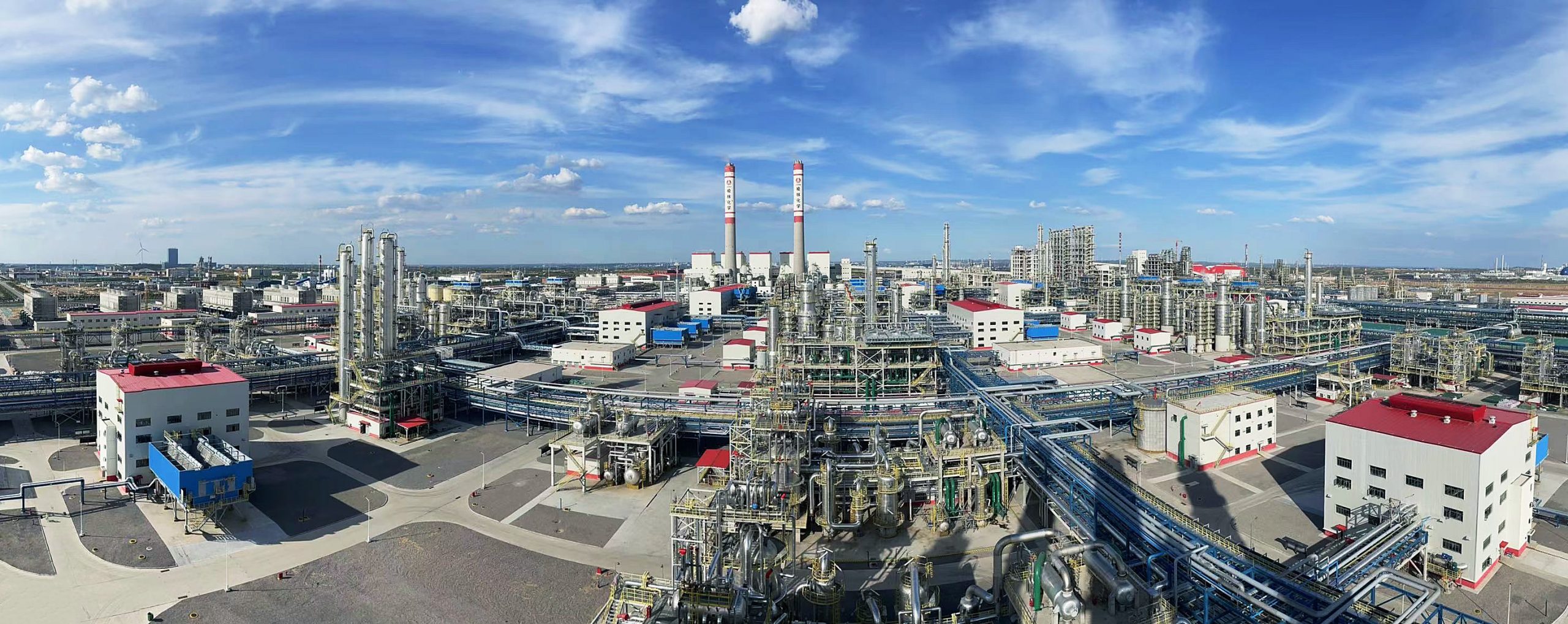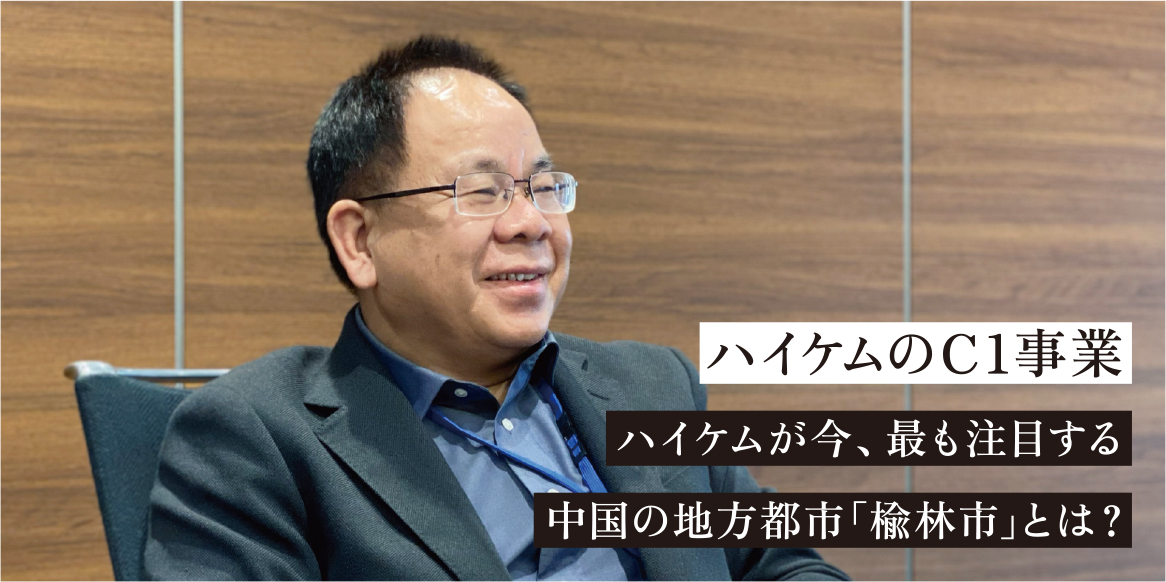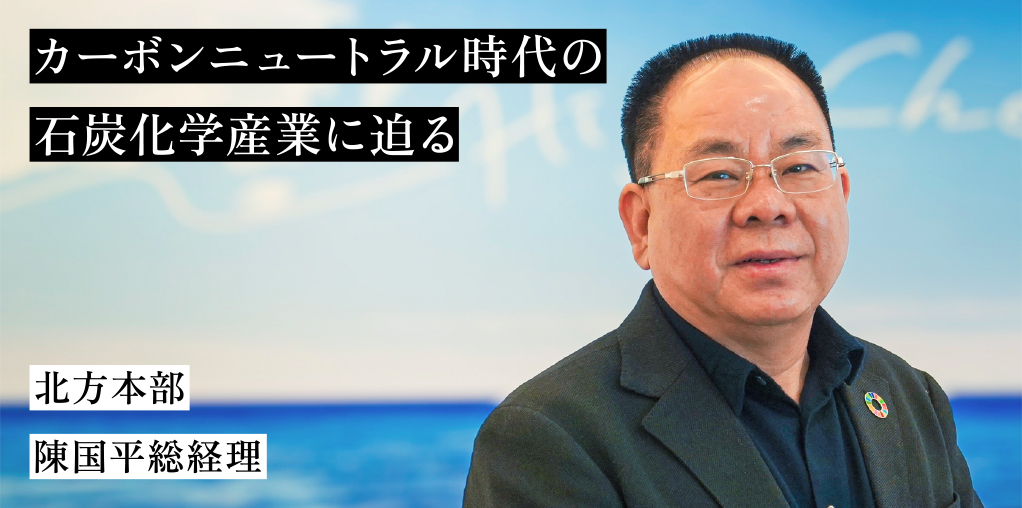HighChem’s C1 Business: The Trump Card for a Low-Carbon Society”
Delving into HighChem’s Proud C1 Technology

——What is the SEG® technology, which is at the core of HighChem’s C1 Chemical Business?
Mr. Konishi: SEG® technology is a process that uses synthetic gas (carbon monoxide and hydrogen) as raw materials to produce ethylene glycol, a type of polyester manufacturing material. The raw materials can be diverse, including coal, natural gas, industrial exhaust gas, and biomass. Therefore, it’s a technology that’s garnering attention as an eco-friendly solution with potential CO2 reduction effects, as it can effectively utilize various waste gases and biomass, convert CO2 to CO, and even use CO2 as a raw material.

——HighChem has been advancing the licensing business of this SEG® technology to Chinese companies. What kind of business is this?
Mr. Konishi: HighChem, using UBE Corporation’s (hereafter UBE) technology, has established a technology to produce a general-purpose chemical, ethylene glycol, based on UBE’s fine chemical technology, by commercializing and scaling up UBE’s ethylene glycol manufacturing technology, which was at the lab level at the time, from the production of DMO from coal gasification.
We have launched this as the SEG® license business. It’s truly a 180-degree shift in thinking, from “making general-purpose chemicals from fine chemicals.” In commercializing and scaling up the technology, we succeeded in commercialization through the construction of a pilot plant and others, along with a partner in China who could share the risk. From there, we expanded the license on a large scale in China, a huge market, while scaling up as needed. And we accomplished all these in just a span of 10 years.
Ethylene glycol is a chemical with a huge market in China, even among general-purpose chemicals. However, we have grown to occupy more than 40% of the market share with the SEG® method. This is equivalent to 23 license contracts and a total production capacity of about 10 million tons. Even if you combine the whole of Japan, it’s only about 1 million tons, so HighChem 's licensees alone are 10 times the size of Japan. Considering that new technologies are hard to come by in the world of general-purpose chemicals, I think it’s fair to say that 10 million tons is an exceptional hit.
——The main raw material for the production of ethylene glycol using SEG® technology is coal, isn’t it?
Mr. Konishi: If we shift our focus to the raw materials, the traditional method of producing ethylene glycol mainly relied on petroleum, which China had to import. The fact that we could utilize coal, a resource that is abundantly available in China, and link it to domestic production has significant meaning from the perspective within China. In addition, we were able to add value by transforming coal, which was previously used for power generation, into chemical products. This was highly appreciated. Moreover, instead of burning carbon to produce CO2, we were able to ride the current trend of decarbonization by fixing carbon into substances. Also, by gasifying coal, carbon monoxide and hydrogen are produced, so we were able to build a solid relationship with Chinese stakeholders in the context of “hydrogen,” which could be a key to future decarbonization.
——Please tell us about the in-house production of “catalysts,” another core value of the SEG® business.
Mr. Konishi: One thing we must not forget when talking about the SEG® business is the in-house production of “catalysts.” We established our own catalyst factory in Nantong and set up research and development bases in Kashiwa, Japan, and Nantong. This allowed us to build a system to pursue not only “qualitative development” but also “quantitative development.” Japan has catalyst technology, but lacks mass production systems. Therefore, there is a history of not being able to gain international competitiveness. As a Japanese company, we were able to establish a large-scale production system in China and build a system that can ensure competitiveness, including scale, for the catalysts we actually developed. This can be said to be a major core value in the SEG® business. And this catalyst technology can now be expanded horizontally to various catalysts and also leads to the OEM manufacturing business of catalysts.

——You have indicated a direction to expand the C1 business as an initiative towards a low-carbon society. Please tell us about the future prospects of HighChem’s C1 business.
Mr. Konishi: The licensing business is finally reaching its climax, and HighChem has participated in the investment of the 1.8 million ton SEG® project of Shaanxi Coal Industry, which has firmly held its rights in the huge coal production area, as the culmination of what we have done so far.

This is completely different in terms of not only profitability but also influence, as it has moved from the stage of “selling interesting technology” to the stage of “using interesting technology as a weapon, gaining good business rights, and doing what we want to do.” We have become able to actively participate in areas that we could not reach before, including new technology development and business expansion.
Things that exist in nature (coal, oil, natural gas, etc.) are mainly chunks of carbon from C6 to C12, for example, even in oil. C1 chemical is a technology that breaks these down to C1 and synthesizes whatever you like from there. And the reason why it is attracting attention now is that it includes C1’s CO2. Now, people all over the world are coming out who want to make various things from CO2, and attention is being focused there.
We are also participating in technology development to produce paraxylene from CO2 , which is exactly a contracted project from the country through NEDO, and we are working day and night on development together with our partners. The world is definitely moving towards carbon recycling, and there are still many hurdles everywhere. In such a situation, it can be said that we have the potential to contribute greatly to society and the earth in terms of catalyst technology, with the strength of having expanded the SEG® business on a large scale using the huge Chinese market..
Related article
-

“HighChem’s C1 Business” The focus is on the regional city of Yulin in China
Interview with Chen Guoping, General Manager of HighChem’s Northern HeadquartersMarch 15, 2023 -

Approaching the Coal Chemical Industry in the Carbon Neutral
Era Interview with General Manager Chen Guoping at the Northern HeadquartersMarch 28, 2024








